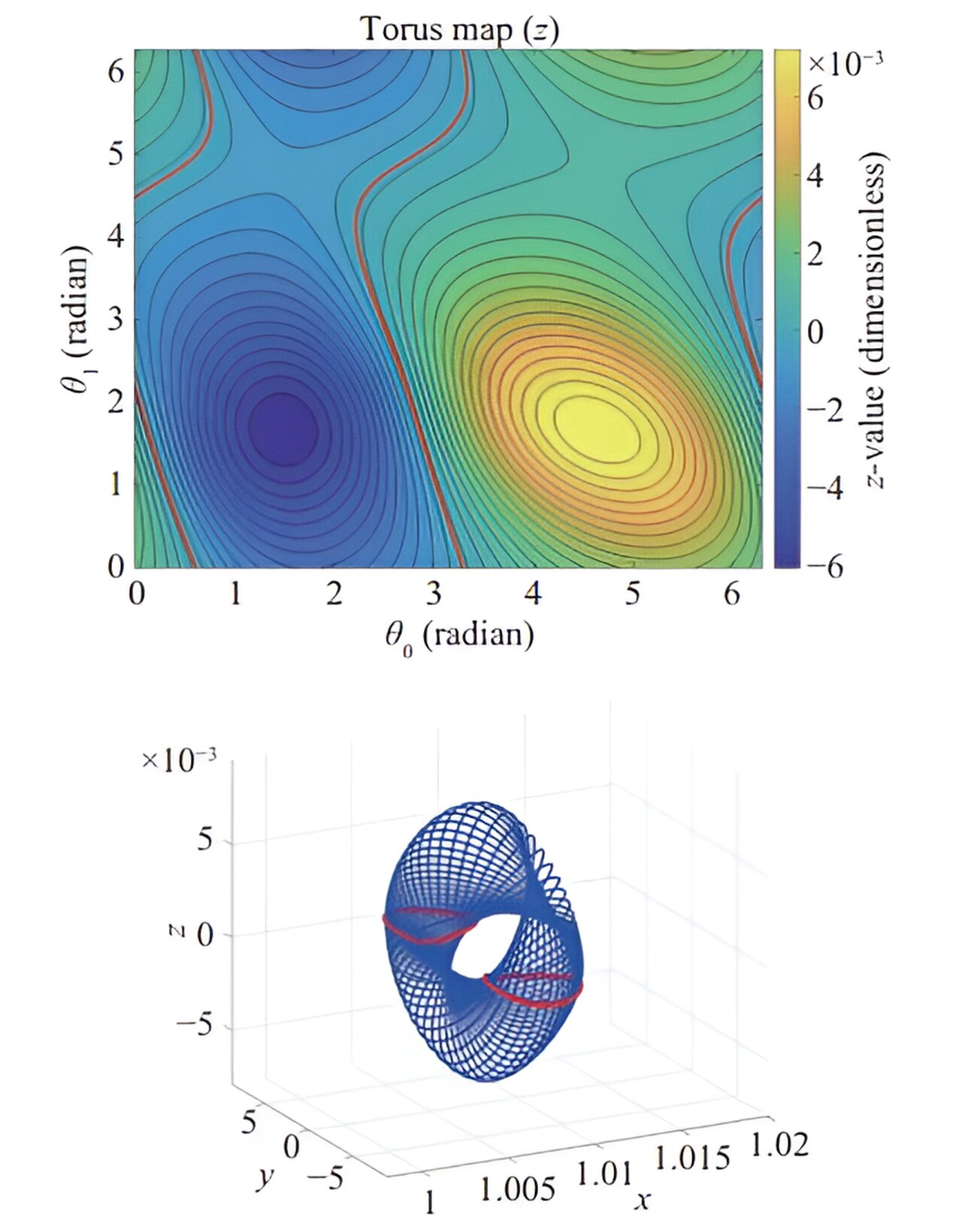Too much money is being spent on answering a philosophical question and as long as there are billions of dollars in budgets, scientists will continue to look for those damn bacteria under the rocks: "they must be nearby, we just need one billion more and another fifty years". In the meantime, we continue to use propulsion systems developed by the Nazis. Mars is full of holes, tomorrow something like the one that fell in Hellas could reach us... And only the Martian bacteria would be left to start over. We need a new nuclear-powered electromagnetic propulsion system that is powerful enough to deflect an asteroid or shorten the flight time of exploration probes.It's NASA own fault...
They took the most complex mission architecture for MSR
A rover that take sample and drop them on Surface, otherwise the radioactive power source could alter the sample.
NASA has to send Solar powered Rover to collect those samples and bring them to Mars orbit launch system
what launch into orbit were dock with Ion drive Spacecraft that return the Samples to Earth
Means four spacecraft to build and launch and operate, what explain the US$11 billion program cost.
(The Rover of the four already active on Mars)
There were alternative propose in 1990s by Robert Zubrin.
Small Rover and Return craft with Methalox plant launch to Mars
After landing the Return craft produce propellants for return, while rover collect samples
once ready, the Rover load them it into return craft, who launch direct to Earth.
You are using an out of date browser. It may not display this or other websites correctly.
You should upgrade or use an alternative browser.
You should upgrade or use an alternative browser.
Mars Sample Return
- Thread starter Flyaway
- Start date
martinbayer
ACCESS: Top Secret
- Joined
- 6 January 2009
- Messages
- 2,375
- Reaction score
- 2,106
I have to wonder how much of this truly byzantine pitiful mission architecture was driven by USG sunk cost and annual budget cycle constraints/appropriations considerations. Musk (god bless his little idiot savant heart) may well bring back Martian soil samples to gaia way before NASA.It's NASA own fault...
They took the most complex mission architecture for MSR
A rover that take sample and drop them on Surface, otherwise the radioactive power source could alter the sample.
NASA has to send Solar powered Rover to collect those samples and bring them to Mars orbit launch system
what launch into orbit were dock with Ion drive Spacecraft that return the Samples to Earth
Means four spacecraft to build and launch and operate, what explain the US$11 billion program cost.
(The Rover of the four already active on Mars)
There were alternative propose in 1990s by Robert Zubrin.
Small Rover and Return craft with Methalox plant launch to Mars
After landing the Return craft produce propellants for return, while rover collect samples
once ready, the Rover load them it into return craft, who launch direct to Earth.
Last edited:
Why? What is the purpose? How does this help? How is it cheaper?I was looking at the tri-core SRB-X design. It might take some doing, but would two SRBs allow a Falcon Heavy core to air-start?
Perhaps improve the payload?
A single shot MSR might be a result.
Launch vehicle performance is not the issue.
Unworkable, SRBs lift from the top., Falcon Heavy booster lift from the bottom.
the spacecraft would be huge and more expensive. Need new facilities and infrastructure.
I don't know that such a conversion would be as expensive as MSR as it was planned---others looked at SRBs used on something besides shuttle--not just me:
A Falcon Heavy core is essentially Centurion---perhaps the guys at Georgia tech could look into such a modification.
Remember, SRB-X was designed from the start to carry a heavy, inert core stage---between them an Centurion's researchers, A Falcon Heavy core that can now air start might also be a way to help Starlink launches in case Starship causes trouble. Norgrum could be convinced to work with SpaceX perhaps.
Instead of being so quick to shoot something down---perhaps look at how much more a Falcon Core could lift if so augmented.
Elon might be open to that.
A Falcon Heavy core is essentially Centurion---perhaps the guys at Georgia tech could look into such a modification.
Remember, SRB-X was designed from the start to carry a heavy, inert core stage---between them an Centurion's researchers, A Falcon Heavy core that can now air start might also be a way to help Starlink launches in case Starship causes trouble. Norgrum could be convinced to work with SpaceX perhaps.
Instead of being so quick to shoot something down---perhaps look at how much more a Falcon Core could lift if so augmented.
Elon might be open to that.
no, he would be quicker than me to shoot it down. He is only going forward with Starship. He is not doing any major changes to Falcon9. this has been stated to you many times.Instead of being so quick to shoot something down---perhaps look at how much more a Falcon Core could lift if so augmented.
Elon might be open to that.
Last edited:
No, it isn't. Falcon 9 is nowhere the same structurally.A Falcon Heavy core is essentially Centurion---perhaps the guys at Georgia tech could look into such a modification.
Remember, SRB-X was designed from the start to carry a heavy, inert core stage---between them an Centurion's researchers, A Falcon Heavy core that can now air start might also be a way to help Starlink launches in case Starship causes trouble. Norgrum could be convinced to work with SpaceX perhaps.
GT has no real expertise on this and the Centurion guys would be long gone. there is no corporate memory for studies like this.
SRB-X was designed to lift a 3rd active shortened SRB. Nothing like a liquid booster for air start.
Nothing like these is going to "help" Starlink. these are 2-4 years from flying.
Scott Kenny
ACCESS: Above Top Secret
- Joined
- 15 May 2023
- Messages
- 6,041
- Reaction score
- 4,906
Gotta design and build all the craft.Why the long wait? I thought that NASA would have wanted the samples back a lot sooner than 2026.
Gotta launch them at the appropriate timing to get to mars (at planetary conjunction, give or take). Then they still take ~9months to make it to Mars. Landers land, wander around for a while to get samples, and then launch back up to Mars orbit. From Mars Orbit, you need to wait for the proper planetary alignment to return at minimum delta-V.
There might be a *little* help in this regard:

With that and FH…maybe?
As per this article, a rocket able to get to space from Mars need only be…pencil sized?
 www.smithsonianmag.com
www.smithsonianmag.com
Now I am not like some who are too quick to throw cold water on things—but even I have problems believing that.
I have always been of the belief that rockets must increase in size even as Brunel believed in ship growth when there were lots of cheap Clippers about.
Rovers folded up a dozen different ways with Rube Goldberg skycranes—that’s one thing.
Lifting off another planet? Whew…
You certainly won’t be doing THAT with a Delta II.

'Tube map' around planets and moons made possible by knot theory
Just as sat-nav did away with the need to argue over the best route home, scientists from the University of Surrey have developed a new method to find the optimal routes for future space missions without the need to waste fuel. The paper is published in the journal Astrodynamics.
phys.org
With that and FH…maybe?
As per this article, a rocket able to get to space from Mars need only be…pencil sized?
The One-Pound Problem
All the Mars Ascent Vehicle has to do is deliver 16 ounces of rocks in a container the size of a grapefruit to Martian orbit. If only it were as easy as it sounds.
Now I am not like some who are too quick to throw cold water on things—but even I have problems believing that.
I have always been of the belief that rockets must increase in size even as Brunel believed in ship growth when there were lots of cheap Clippers about.
Rovers folded up a dozen different ways with Rube Goldberg skycranes—that’s one thing.
Lifting off another planet? Whew…
You certainly won’t be doing THAT with a Delta II.
Last edited:
Yes, with something even smaller, like a Standard MissileLifting off another planet? Whew…
You certainly won’t be doing THAT with a Delta II.
Last edited:
No, look in a mirror. Instead of being so quick to propose a new or bigger rocket, first think economics (reusability, cheaper, etc). That is how SpaceX does it. Cost matters, lift capability is secondary.Instead of being so quick to shoot something down---perhaps look at how much more a Falcon Core could lift if so augmented.
Elon might be open to that.
Scott Kenny
ACCESS: Above Top Secret
- Joined
- 15 May 2023
- Messages
- 6,041
- Reaction score
- 4,906
The lower the energy that route uses, the longer it takes.There might be a *little* help in this regard:

'Tube map' around planets and moons made possible by knot theory
Just as sat-nav did away with the need to argue over the best route home, scientists from the University of Surrey have developed a new method to find the optimal routes for future space missions without the need to waste fuel. The paper is published in the journal Astrodynamics.phys.org
With that and FH…maybe?
Hohmann Transfer Orbits were originally thought of as the lowest energy routes, and they are the lowest energy direct routes.
Those other weird transfer orbits take something like 5x longer.
Something the size of an SM3 has enough thrust to make mars orbit.As per this article, a rocket able to get to space from Mars need only be…pencil sized?
The One-Pound Problem
All the Mars Ascent Vehicle has to do is deliver 16 ounces of rocks in a container the size of a grapefruit to Martian orbit. If only it were as easy as it sounds.www.smithsonianmag.com
Now I am not like some who are too quick to throw cold water on things—but even I have problems believing that.
I have always been of the belief that rockets must increase in size even as Brunel believed in ship growth when there were lots of cheap Clippers about.
Rovers folded up a dozen different ways with Rube Goldberg skycranes—that’s one thing.
Lifting off another planet? Whew…
You certainly won’t be doing THAT with a Delta II.
This find of any use?


Refining space mission interoperability: NASA unveils new trajectory sharing strategy
Los Angeles CA (SPX) Apr 26, 2024 - NASA's Engineering and Safety Center has introduced a new approach, dubbed Trajectory Reverse Engineering (TRE), for transferring spacecraft trajectories between flight mechanics tools. This m
www.spacedaily.com
